Revolutionize Your Multifamily Marketing Plan: Say Goodbye to Cold Calling
Cold calling has long been a staple in sales strategies, but in today’s multifamily marketing landscape, it’s becoming an outdated and inefficient approach. As buyers have more access to information than ever before, the days of the cold call, where you hope to reach a prospect who has never heard of your property, are increasingly behind us. Let’s explore why cold calling no longer works and how to shift your focus to a more effective multifamily marketing plan.
The Problem With Cold Calling Today
Today’s consumers have grown accustomed to controlling the flow of information. Prospects no longer want to receive unsolicited calls. Instead, they prefer researching their options online at their own pace. The internet allows multifamily buyers to gather information and form their opinions long before they engage in any form of direct communication.
This shift makes traditional cold calling less effective. Buyers can bypass sales pitches by finding answers to their questions online, and when they are ready to take action, they’re more likely to reach out to properties that have already built a relationship with them through strategic online content. This is where the power of content-driven marketing comes into play.

However, time and time again, we see industry professionals who cannot seem to shake the old-school approach. Something to keep in mind is that consumers are not the only ones with access to the internet. You can also use it to stay updated on your target customers’ issues and formulate ways to resolve them.
With access to robust market data and advanced tools, multifamily marketers now can engage prospects with content that aligns with their needs. By understanding your multifamily buyer persona and creating a multifamily brand story that resonates with them, you can generate warm leads that come to you, rather than having to interrupt them with a cold call.
As a commercial real estate marketing agency, we understand the power in numbers.
Content Is the New Cold Call
As much as outbound calls have been the cornerstone of many sales processes, inbound multifamily marketing offers a smarter way to engage prospects. With multifamily content marketing, your property can provide the information prospects need to make informed decisions. Inbound marketing attracts buyers by creating content that speaks directly to their needs and answers their questions before they ever pick up the phone.
Today, more than 75% of consumers say receiving customized content makes them more likely to consider a brand, and 78% are more likely to purchase after engaging with personalized communications. On the other hand, cold calling is a generic, one-size-fits-all approach that fails to meet the buyer where they are. Multifamily inbound strategies provide a more tailored experience, engaging prospects with relevant content that educates, informs, and builds trust.
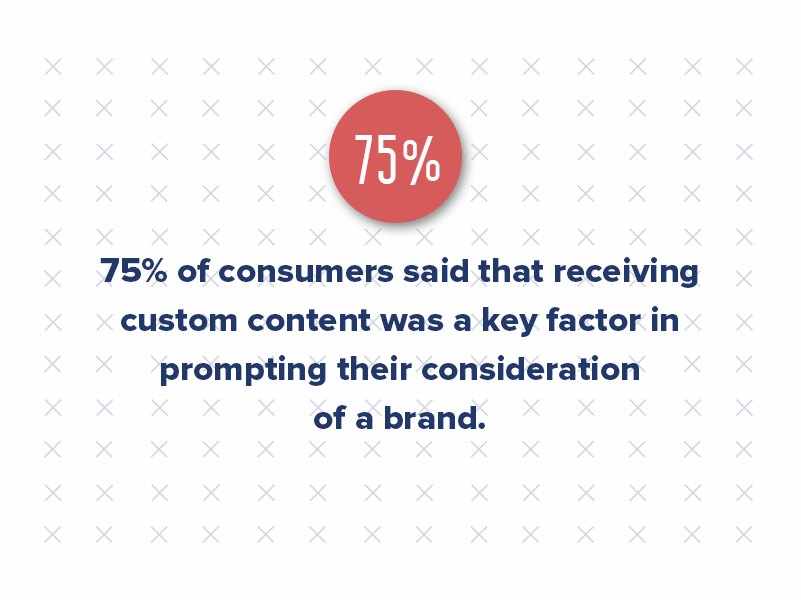
As a multifamily branding agency, we know that the effectiveness of marketing today relies on content that’s personalized and valuable. Instead of cold calling to persuade prospects to consider your property, you can bring them in with content that addresses their questions, pain points, and goals. From blog posts and white papers to video tours and social media engagement, multifamily branding done well serves as a tool to nurture leads before they ever reach out.
How to Shift Away From Cold Calling: 3 Effective Alternatives
So, how do multifamily marketers successfully build relationships without relying on the outdated practice of cold calling?
Here are a few strategies that can transform your sales approach and increase multifamily lead generation:
1. Network at Industry Events
Building relationships through networking is one of the most effective ways to grow your brand presence without the need for cold calling. Attending events like the National Apartment Association Apartmentalize or the Texas Apartment Association One Conference allows you to engage with other industry professionals and prospective clients.
Networking isn’t about pushing a sale but building trust and rapport. Establishing yourself as an authority in multifamily marketing can lead to speaking engagements, increased credibility, and more leads down the line.
2. Contribute Content to Relevant Publications
Content is a powerful asset in inbound multifamily marketing, and one of the most accessible avenues to build a sense of authority. Publishing articles, guides, and blog posts that answer common renter questions builds your multifamily brand identity and establishes you as an expert.
For example, creating content focused on your city’s “Best Neighborhoods for Young Professionals” or an in-depth guide to moving into an apartment helps foster a relationship with your audience. As your content becomes more aligned with what your multifamily buyer persona is looking for, you’ll see organic traffic rise, leading to more inbound leads without the need for cold calling.
Submit an article to a magazine publisher you know your customers will read, or create your blog. Furthermore, you don’t always have to publish your work. Reposting another blog by a reputable source will help gain attention and credibility.
At Criterion.B, our multifamily marketing plan includes guest posts and contributing articles to industry publications. If you take a quick look at our blog, you might notice a couple of guest posts now and then. These are relationships we are continually building. Our team also regularly publishes content for several publications, including the National Apartment Association, Texas Apartment Association, Units Magazine, Multifamily Insiders, and more.
3. Engage Past Customers and Build Relationships
A strong, organic way to grow your business is to focus on existing clients and encourage repeat business. The relationships you build will be at the core of your business. It’s as simple as that. Many of our most successful projects stem from previous clients who contacted us again after experiencing the value of our services. People are willing to pay a higher price when they know they are getting good service.
The multifamily brand story and brand experience you’ve built should continue to resonate with clients over time, keeping them engaged. Building relationships through consistent follow-ups, personalized emails, and providing value through updated services can keep your brand top-of-mind when they’re ready for more. While one customer might not have the budget, resources, or capabilities to become your customer right now, this could change in a year or two, so always keep that line of communication open.

Shifting Your Multifamily Marketing Plan for Success
As a multifamily marketing agency, we understand the need to adapt to an ever-changing digital landscape and adjust your multifamily marketing plan. While cold calling once worked, the modern approach requires a strategic shift toward multifamily inbound marketing. The days of purely relying on outbound efforts are fading as more prospects expect to research and decide based on the content you create. Whether through blog posts, SEO-optimized websites, social media campaigns, or email marketing, the focus is on nurturing relationships, providing valuable insights, and meeting prospects where they are.
With multifamily branding, it’s about creating content that not only speaks to renters’ needs but builds trust and establishes authority in the industry. Once your property has built up a reputation through consistent, engaging content, your multifamily marketing plan becomes less about selling and more about building a genuine relationship with your customers. Through multifamily graphic design, your property can create a compelling online experience that connects with prospective renters on a deeper level.
In the long run, shifting your focus to inbound strategies and moving away from cold calling will lead to more engaged prospects, stronger relationships, and a more sustainable approach to multifamily marketing. The key is creating a unique brand that resonates with your audience and using the right digital marketing tools to amplify your reach and connect with prospective renters before they even need to make a call.
Remember, it doesn’t matter which multifamily marketing plan or strategy you use as long as you treat the customer with the utmost importance.
Generative AI in Marketing: Is Original Research Still Worth It?
AI-generated content has exploded in the last few years, making SEO efforts faster and more scalable than ever.
But with the rise of generative AI, are we losing true expertise? AI can churn out thousands of words in seconds, but is it just repackaging what’s already out there?
In contrast, original research brings something new to the table — data-driven insights that drive authority, build trust, and differentiate brands.
But scaling original research in SEO is tough. It takes time, effort, and resources.
So, in an era where generative AI is at our fingertips, is original research still worth the investment? Or are we headed toward a future where SEO is simply about who can produce content the fastest?
We asked eight thought leaders for their take on original research vs. AI-generated content, and the consensus is clear — while generative AI in marketing can enhance efficiency, original research remains the key to true authority.

The Challenge of Scaling SEO Through Original Research
Scaling SEO with original research is problematic because it requires time, money, and expertise. Unlike AI-generated content, which can be produced quickly, original research involves surveys, proprietary data collection, and industry reports.
Aaron Franklin, Head of Growth at Ylopo, knows firsthand how powerful original research can be. He ditched generic SEO tools for manual surveys and found that what people actually care about often differs from what search algorithms assume.
“In 2018, I manually surveyed 400 homeowners instead of relying on SEO tools,” Franklin said. “The result? A report revealing 68% cared more about commute times than school districts — a nuance algorithms missed. That study still drives 12% of our organic traffic today.”
Franklin’s experience highlights a key limitation of AI: It can summarize existing data, but it can’t generate new insights. This is why original research holds lasting value — it feeds unique, high-quality content into the SEO ecosystem rather than rehashing the same information AI scrapes from the web.
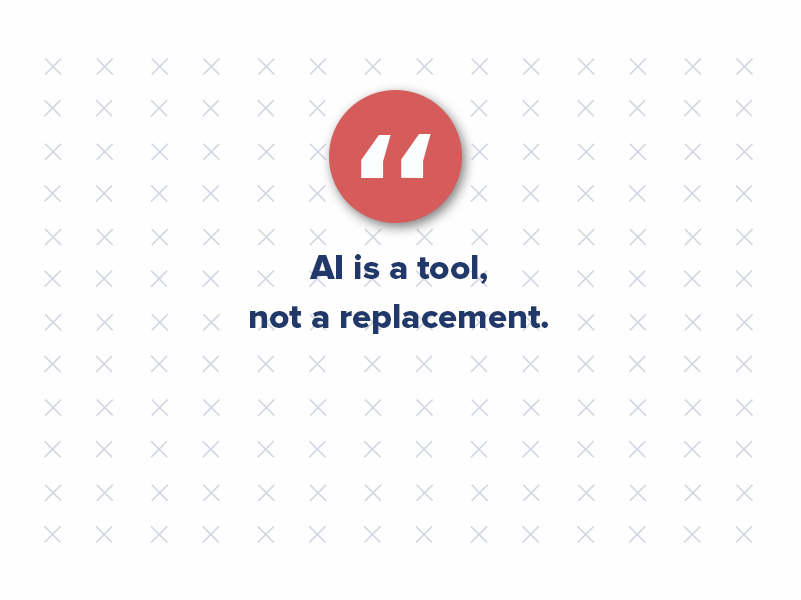
Why Original Research Still Matters in SEO
Many marketers agree: While original research is challenging to scale, it’s more impactful in the long run.
Lana Rafaela Cindric, SEO & Content Manager at SiteGuru, points out that people are tired of seeing the same recycled content online:
“Most content out there is rehashed and plain annoying to users who now turn to Reddit for fresh insights,” Cindric said. “We first look at what our data can tell us about audience challenges, then format it into what works best — blog posts, videos, or whitepapers. This has led to increased organic rankings and social shares.”
This is the real power of original research — it doesn’t just help SEO; it builds brand authority in SEO and thought leadership.
Darwin Liu, CEO of X Agency, emphasizes how original research sets brands apart:
“Scaling SEO with original research is challenging but rewarding. We’ve increased engagement by 50% through data-driven reports, secured high-authority backlinks, and created evergreen content that fuels long-term organic growth. AI can summarize, but it can’t replace real-world insights.”
Simply put, brands willing to invest in original research will own their niche, while those relying solely on AI-generated content risk blending into the noise.
AI + Original Research: Finding the Balance
The best approach isn’t choosing between AI and original research — it’s leveraging both. AI can process large datasets and summarize trends, but it works best when paired with original data that generative AI doesn’t have access to.
For example, Swayam Doshi, Founder of Suspire, ran a study on eco-friendly packaging preferences, and the results were game-changing:
“By publishing our findings, we saw a 41% increase in organic traffic within three months. AI made it easier to analyze the data, but the original research helped us stand out as a thought leader.”
Similarly, Laurence O’Toole, CEO of Authoritas, notes that original research plays a huge role in lead generation and competitive advantage:
“Original research works exceptionally well for high-quality lead generation and increased conversion rates. It also generates links and shares, positively impacting rankings.”
AI alone can’t create this level of engagement. But when AI is used as a supporting tool — to process data, automate tasks, or repurpose insights — it becomes a powerful asset in scaling research-driven content.
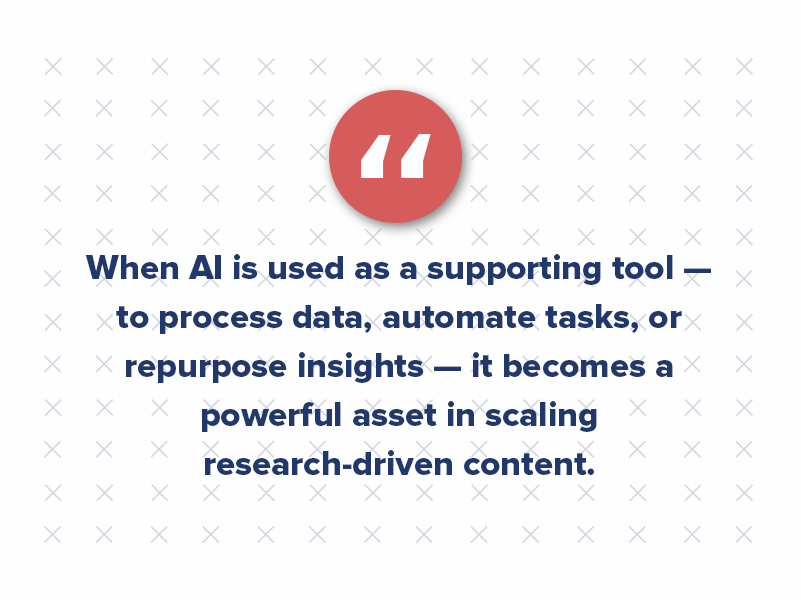
Are We Losing Expertise in the Age of AI?
With AI-generated content flooding the internet, some fear that true expertise is being lost. But for those willing to go beyond generic AI-driven content, the opportunity to stand out is greater than ever.
As Yoyao Hsueh, Founder and CEO of Floyi, puts it:
“Original research is the gold standard of content and SEO. AI can summarize existing knowledge, but it can’t generate new knowledge. That’s where real expertise comes in.”
At Criterion.B, AI is an incredibly useful tool for content marketing, but it should never replace human expertise. Brands that commit to producing new insights — whether through surveys, case studies, or proprietary research — will always have an edge.
The future of SEO isn’t about who can generate the most content the fastest. It’s about who can provide the most valuable content.
That’s what sets real thought leaders apart.

Proven Marketing Strategies From Industry Leaders You Can Start Using Today
Marketing can sometimes feel like a game of trial and error, but a few tactics consistently hit the mark.
We’ve chatted with 16 industry pros who’ve nailed down the strategies that work, from the power of cause marketing to the smart use of content repurposing.
Here’s a look at the marketing tactics these experts can’t live without — and why they’re so effective.

1. Champion Cause Marketing
One marketing strategy example that has shown immense success is cause marketing. Patrick Beltran, Marketing Director at Ardoz Digital, explains that this approach involves partnering with nonprofit organizations and charities to support meaningful causes. By aligning your multifamily brand with a cause, you add a human element to your marketing efforts, significantly boosting consumer perception and engagement.
“Consumers genuinely feel good about their purchases when they know their money is helping provide essentials like shelter, food, or other support to those in need,” says Beltran. The key to success with cause marketing is choosing a cause you are passionate about, as this authenticity drives better results for your campaigns.
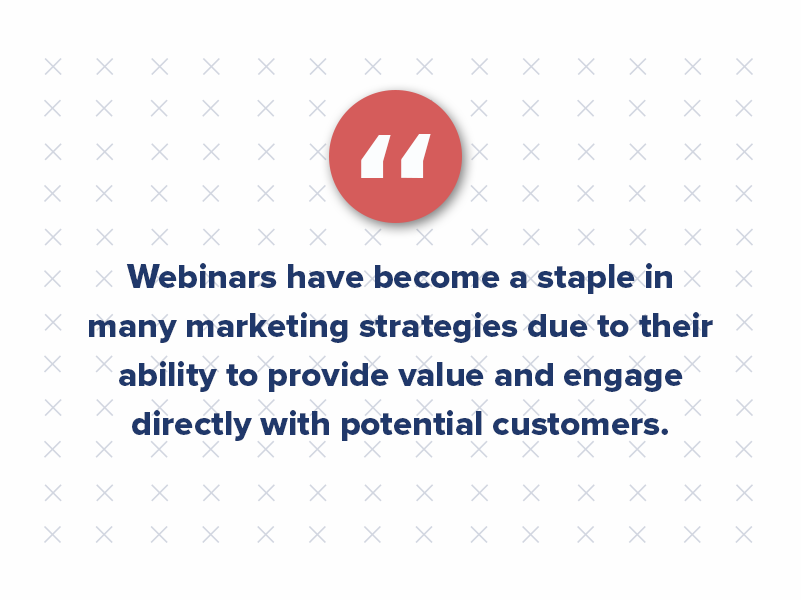
2. Host Value-Packed Webinars
Webinars have become a staple in many marketing strategies due to their ability to provide value and engage directly with potential customers. Rohit Vedantwar, Co-founder and Director at Supramind.com, highlights the effectiveness of this tactic by sharing how his team’s webinars led to a 45% increase in qualified leads and a 30% rise in product trials within six weeks.
“Webinars position our brand as a thought leader while fostering a sense of trust and authority with our audience,” says Vedantwar. By offering actionable insights and detailed product demos, webinars attract participants and drive conversions by addressing the specific needs of your audience.
3. Segment Newsletters by Interest
Personalization in marketing is crucial, and one way to achieve this is by segmenting newsletters based on subscriber interests. Meaghan Maybee, Marketing Communications Specialist at pc/nametag, shares how her team’s segmented newsletters have led to higher open rates, click-through rates, and lower unsubscribe rates.
“Our marketing team creates multiple newsletter types according to a subscriber’s unique interests,” says Maybee. This approach ensures that the content delivered is relevant to where the subscriber is in their buyer’s journey, making them more likely to engage with the emails and ultimately convert.
4. Nurture Leads with Email Campaigns
Email marketing remains one of the most effective ways to nurture leads and build relationships with potential customers. Randy Speckman, CEO at Randy Speckman Design, swears by nurturing email campaigns, sharing how a seven-email drip campaign for an online course launch significantly increased sales on launch day.
“Email nurturing works because it builds familiarity and trust over time,” says Speckman. The key to success with email marketing campaigns is providing real value in each message, which helps establish your brand as an authority in your field and encourages recipients to take action when the time is right.
5. Present at Industry Events
Industry events offer a unique opportunity to showcase your expertise and connect with potential clients face-to-face. Nicole Farber, CEO of ENX2 Legal Marketing, shares how presenting at law schools and marketing conferences has led to multiple new clients and substantial new business.
“Presenting in front of audiences allows me to showcase my knowledge and expertise,” says Farber. By establishing yourself as a thought leader and providing valuable insights, you can generate leads and build credibility in your industry.
6. Create In-Depth Content Guides
Content marketing is a powerful tool for establishing your brand’s authority and driving qualified leads. Josh Cremer, CEO and Creative Director at Redfox Visual, shares how an in-depth guide on local SEO best practices significantly increased qualified leads for his agency.
“Content works because it establishes your expertise, builds trust, and provides value to readers,” says Cremer. In-depth content guides address key concerns and questions that your audience may have, positioning your brand as a go-to resource in your industry.
7. Optimize Paid Social Media Ads
Paid social media advertising allows you to reach your target audience with precision and scale your marketing efforts. Jeff McGeary, Founder & CEO, PracticeVIP LLC, shares how paid social media ads have driven substantial new revenue for his clients.
“For small practices especially, paid social advertising is a game-changer,” says McGeary. By targeting your ideal customers and crafting relatable messaging, you can generate high-quality leads and achieve a significant return on investment.
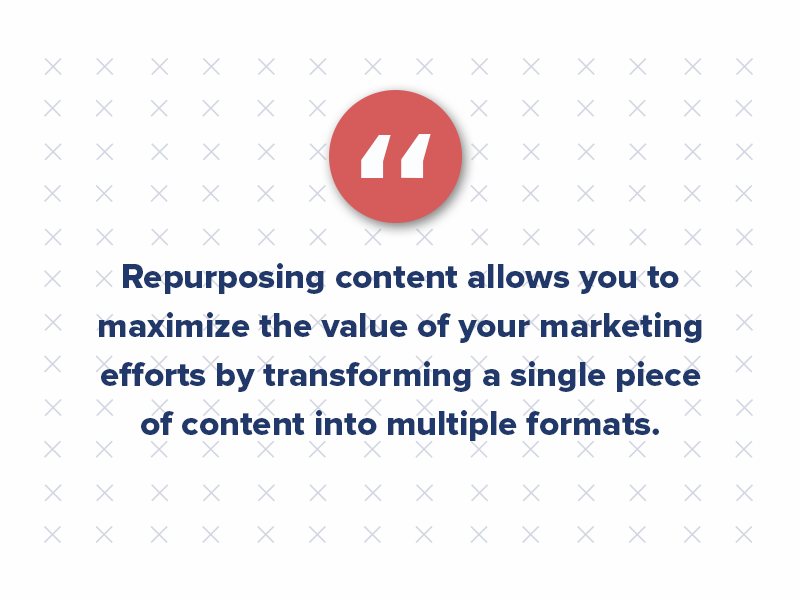
8. Maximize Reach with Content Repurposing
Repurposing content allows you to maximize the value of your marketing efforts by transforming a single piece of content into multiple formats. Vaibhav Kakkar, CEO of Digital Web Solutions, highlights how his team’s content repurposing strategy led to increased reach and engagement.
“We maximize the value of our content by transforming a single piece into multiple formats,” says Kakkar. This approach ensures that your core message reaches different audience segments, making your marketing strategies more efficient and impactful.
9. Personalize Your Email Marketing Campaigns
Personalization is key to effective email campaigns. Lauren Gast, Marketing Director at Truck Driver Institute, shares how personalized email campaigns have increased inquiries for their CDL training programs.
“It works because it creates a one-to-one and relevant relationship with the audience,” says Gast. By addressing the specific needs and interests of your audience, personalized emails can significantly boost engagement and conversion rates.
10. Showcase Customer Testimonials
Customer testimonials and case studies are powerful tools for building trust and credibility with potential clients. Tim Woda, Founder at White Peak, shares how leveraging customer testimonials led to an increase in leads and inquiries.
“Real-life success stories resonate with prospects far more than generic marketing messages,” says Woda. By showcasing the tangible benefits of your services through customer testimonials, you can convert leads into customers more effectively.
11. Produce Engaging Explainer Videos
Visual content, especially videos, is a highly effective way to communicate complex messages quickly and engagingly. Kevin Watts, President and Founder at Raincross, shares how an explainer video increased qualified leads by over 30% within the first month.
“Videos work because they can convey a complex message in a short, easy-to-understand format,” says Watts. Engaging visual content can capture the attention of your audience and drive them to take action.
12. Leverage Strategic Partnerships
Strategic partnerships allow you to tap into an established network and community, providing access to high-quality leads. Robert P. Dickey, President and CEO at AQ Marketing, shares how strategic partnerships have driven significant lead generation for his clients.
“Strategic partnerships work because you’re leveraging an established network and community that already trusts your partner,” says Dickey. By creating mutually beneficial partnerships, you can gain exposure to new audiences and drive organic growth.
13. Utilize User-Generated Content
User-generated content (UGC) adds authenticity to your marketing tactics by showcasing real customer experiences. Kam Talebi, CEO of Gigli, shares how utilizing UGC has improved their ROI and strengthened connections with customers.
“UGC is more effective than brand-generated content because it showcases the experiences that other people are having with our products,” says Talebi. Incorporating UGC into your marketing strategy can build trust and engagement with your audience.
14. Organize Industry-Specific Events
Industry-specific events directly engage your target market, making them a highly effective marketing tactic. Amar Ghose, CEO of ZenMaid, shares how organizing the “Maid Summit” significantly boosted brand awareness and generated high-quality leads.
“By bringing people together and providing valuable content, we not only increased our brand visibility but also maintained a steady flow of leads,” says Ghose. Organizing events allows you to connect with your audience on a personal level and establish your brand as a leader in your industry.
15. Tailor Marketing to Generational Segments
Understanding the unique preferences of different generational segments is crucial for crafting personalized marketing strategies. Farnam Elyasof, Founder of Flex Suits, shares how tailoring campaigns to Millennials and Gen X has optimized engagement and boosted leads.
“Being aware of generational nuances ensures that you are using the right marketing strategies to boost your leads and revenue,” says Elyasof. By addressing the specific needs and preferences of each generation, you can create more effective and relevant campaigns.
16. Offer Referral Incentives
Referral incentives are a cost-effective way to amplify word-of-mouth marketing and drive organic growth. John Cammidge, Handyman at Handyman John, shares how offering a 10% discount for referrals significantly boosted revenue and client loyalty.
“Referral incentives leverage trust — clients trust their friends’ recommendations,” says Cammidge. By rewarding existing clients for referring new customers, you can create a cycle of consistent growth and client retention.
Championing Success Through Strategic Marketing Tactics
These marketing tactics, championed by industry thought leaders, demonstrate the power of strategic, personalized, and value-driven approaches. Whether through cause marketing, personalized email campaigns, or organizing industry events, these marketing strategy examples have proven their effectiveness in driving results across various sectors. With these marketing tactics, you can enhance engagement, build trust, and achieve long-term success for your organization.

Is Social Media Marketing Worth It? Let’s Break Down the Numbers
Social media marketing: Everyone’s doing it, and the promise of a massive, engaged audience for “free” is hard to resist.
But hold on a second.
Before you jump into the endless vortex of posting and follower chasing, consider this: recent studies show that organic social media delivers the lowest return on investment compared to other marketing channels.
Ouch. That can sting.
However, before you write off social media entirely, here’s the good news: social media marketing can be a powerful tool for driving engagement and brand awareness (which ultimately leads to authority, thought leadership, website traffic, and even conversions). The key is understanding its strengths and weaknesses and how to leverage it strategically.
The allure of social media for business is undeniable. Endless scrolling, instant gratification, and the promise of reaching millions — it’s a tempting cocktail. But is more always better?
For years, the mantra was “post more, engage more.” But the reality is, the social media landscape has evolved. Audiences are savvier, attention spans are shorter, and algorithms are smarter. Now, it’s about strategic, high-quality content that truly resonates.
Why Tracking Social Media Success Can Feel Like Counting Raindrops
Let’s be honest, proving the value of social media marketing to upper management can feel like trying to quantify the weight of a cloud.
While platforms promise massive reach, 52% of organizations struggle to measure their impact. Unlike traditional advertising with clear metrics, social media’s influence often feels intangible. A witty tweet might go viral, generating tons of engagement, but did it translate into dollars and cents?
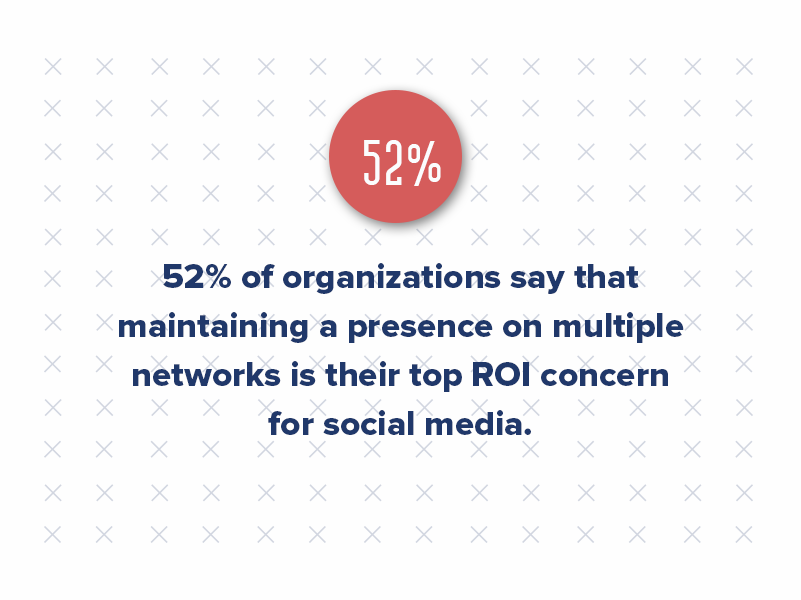
The tricky part is that social media marketing often lays the groundwork for later conversions in the marketing funnel. Someone might see your informative blog post about a common industry problem, “like” your page, and then months later, when they’re ready to tackle that problem, remember your company and visit your website for a solution.
It’s a subtle influence, not a direct conversion machine.
Why You Still Need Social Media Marketing (Even If It’s Hard to Track)
Despite the tracking challenges, social media marketing offers several invaluable benefits that contribute to your overall marketing strategy, even if they aren’t directly reflected in a sales report:
- Brand Awareness & Visibility: Social media platforms put your brand directly in front of a massive audience, keeping you top-of-mind and fostering brand recognition. It’s like having a constant, low-key billboard reminding people you exist.
- Building Relationships: Social media allows for two-way communication, the holy grail of marketing! Respond to comments, answer questions, and engage with your audience in real time. This builds trust and loyalty, turning fleeting followers into brand advocates.
- Market Research & Customer Insights: Social listening allows you to eavesdrop on the online world, seeing what people are saying about your brand, industry trends, and competitor activity. This invaluable intelligence can inform your marketing strategy and help you stay ahead of the curve.
- Community Building: Create a vibrant online community where customers can connect, share experiences, and feel a sense of belonging. This fosters brand loyalty and positive word-of-mouth marketing — essentially, free advertising from your happy customers!
Beyond the Likes
Despite the challenges in quantifying social media ROI, it still remains a critical component of any successful marketing strategy. Why?
Consider this: a staggering 94.6% of internet users between 16 and 64 years old visited a social network site in the last month. This massive audience represents a goldmine of potential customers.
While social media might not always yield direct sales figures, it’s where discovery happens. A full 44% of Gen Zers and 33% of millennials primarily gather product information through social channels. This means social media is often the first touchpoint for many consumers, influencing their purchasing decisions.
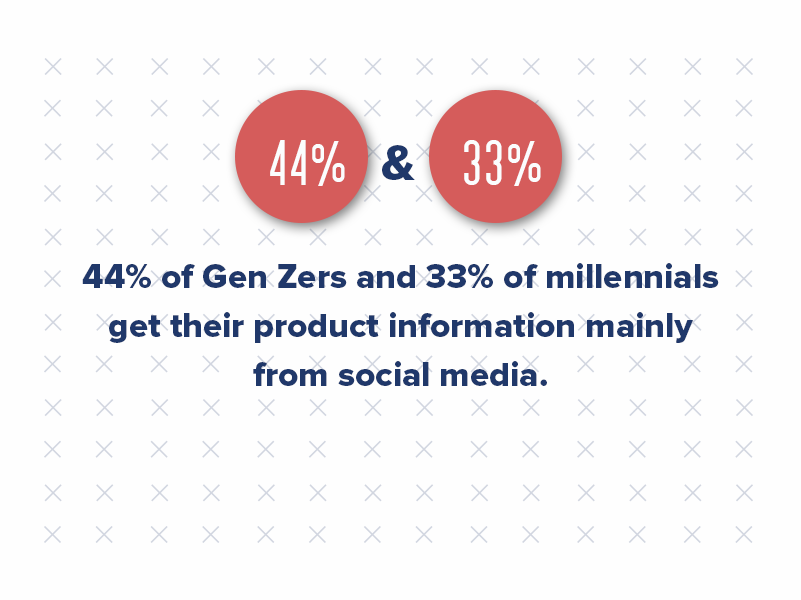
Additionally, 90% of marketers now recognize the importance of social search optimization, underscoring the platform’s role in the overall customer journey.
Prioritizing Quality Over Quantity
The era of shotgun social media marketing is over. Companies are realizing that spreading resources thin across multiple platforms isn’t always the most effective strategy. There’s a growing shift towards focusing on a few key channels where they can truly excel.
Platforms like Twitter have seen a decline in brand usage as companies prioritize social media ROI. The future lies in mastering a select group of platforms, delivering exceptional content, and measuring impact closely.
So how do we bridge the social media ROI gap?
- Set SMART Goals: Don’t just aim for “more followers.” Define Specific, Measurable, Achievable, Relevant, and Time-bound goals that align with your overall marketing objectives. Focus on metrics like website traffic, lead generation, or brand sentiment. These will be your guiding lights to measure success.
- Targeted Content: Don’t be a social media spammer. Create high-quality, engaging content that resonates with your ideal customer. Tailor your content to the specific platform, understand what your audience wants, and provide them with valuable information or entertainment. Social is best for building brand equity, which takes time. Don’t revert to your old, self-promotion-y ways either. No one likes a hard sell, and letting them flock to you will be so much more effective in the long run.
- Paid Advertising: Consider strategically using paid social media advertising to reach a wider audience and target specific demographics with a laser focus. Paid ads can be a powerful tool to promote valuable content offers, webinars, or drive traffic to key landing pages.
- Track & Analyze: Metrics like website traffic, lead generation, and social media engagement paint a picture of your social media’s impact, even if you can’t directly attribute every sale to a specific tweet. Use analytics tools to understand what’s working and what’s not, and constantly refine your approach. Run experiments with new content types or tone of voice. Once you see results, start tweaking future posts and keep testing and iterating as you go.
- Be Consistent: Regular posting keeps your brand on mind and builds your content’s anticipation.
To truly capture attention, brands must shift their focus from quantity to quality. Social media should be an interactive space where value exchange is a two-way street. crafting content that informs, inspires, or simply brings a smile to faces, businesses can foster genuine connections with their audience. It’s not just about promoting products or services; it’s about offering value and becoming part of the conversation. Remember, social media is a two-way street. By listening to your audience and responding authentically, you can build trust and loyalty that translates into long-term business success.
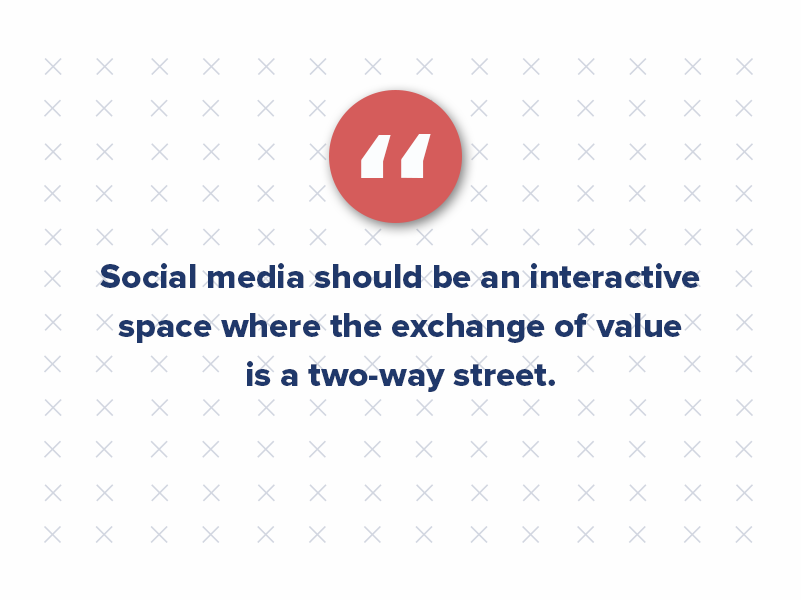
Making Social Media ROI Work for You
Social media success requires a strategic approach, not random posting. It’s like having a secret weapon in your marketing arsenal — one that fosters brand loyalty, fuels word-of-mouth marketing, and positions you as a thought leader in your industry.
Ready to unlock social media marketing’s true potential? Contact us today for a free consultation and learn how we can help you develop a winning social media strategy that aligns with your business goals.
Beyond the Booth: Creative Ways to Network at Multifamily Events
We’ve had clients ask us more times than not, “How do I get in front of multifamily?” “How do I market my business beyond my website and digital ads?”
The multifamily landscape is booming with new residents flooding the market and competition fiercer than ever. Whether you’re a seasoned property management firm or a disruptive proptech startup, standing out in this crowded space requires a strategic approach.

To grab the attention of multifamily decision-makers, you need to be where they are and speak their language.
Here are 10 proven ways to put your brand in front of the right people in the multifamily industry:
1. Partnering With Local Syndicators
Syndicators serve as the bridge between real estate investors and multifamily properties. By forging partnerships with these key players in your local market, you can gain valuable access to their network of potential clients. Offer resources, co-host educational events, or sponsor their newsletters to build brand awareness and trust within their investor pool.
2. Leverage Apartment Association Events
Local apartment associations host regular events and conferences that attract property managers, owners, and industry professionals. Participating in these events, like the Apartment Association of Greater Dallas, presents a fantastic opportunity to network, showcase your solutions, and connect with decision-makers directly. Attend workshops, volunteer for committees, or even sponsor the event to maximize your visibility.
3. Don’t Miss National Trade Shows
Major industry events like the National Apartment Association’s Apartmentalize offer unparalleled networking opportunities. Having a well-designed booth with engaging presentations is crucial. But don’t underestimate the power of pre-show outreach and post-event follow-up to nurture those initial connections.
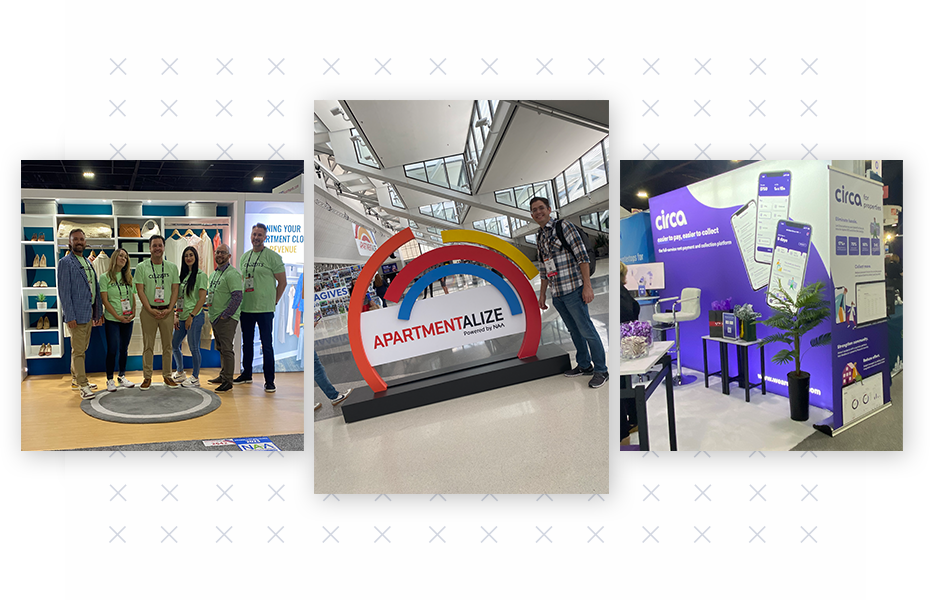
4. Become a Thought Leader Through Content Creation
Multifamily professionals are busy, but they’re hungry for valuable insights. Establish your brand as a trusted resource by contributing informative articles to local and national publications relevant to the industry. Reach out to the Apartment Associations you’re connected with or publications like Multifamily Insiders and Forbes. Offer fresh perspectives, share data-driven insights, and showcase your expertise through compelling content.
5. Network Beyond Events
Networking doesn’t stop at conferences. Join online forums and social media groups frequented by multifamily professionals. Participate in discussions, answer questions thoughtfully, and be a helpful resource.
Attend industry meetups, join local business associations, and don’t hesitate to talk wherever you encounter potential clients. For example, many cities have a monthly “Business Exchange” or “Women in Commercial Real Estate” group you can join, or you can join hundreds of Facebook and LinkedIn groups relevant to your industry.
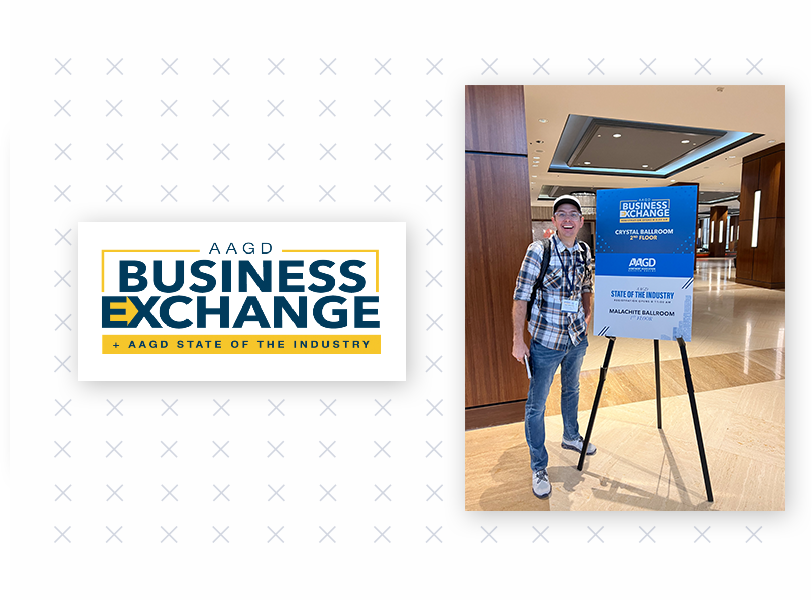
Here are a few of our favorite multifamily LinkedIn groups:
- Apartment Innovation and Marketing
- Commercial Real Estate Pros
- Commercial Real Estate Referral Network
- Multifamily Executive
- Residential Property Management Professionals
- Multifamily Insiders Community
6. Partner With Property Management Software Providers
Property management software companies have a vast network of users within the multifamily industry. Explore co-marketing opportunities with these software providers. Develop integrations with their platforms, co-host webinars, or offer joint content resources that address common pain points for property managers.
7. Utilize Online Marketing Strategies
Today, a robust online presence is critical. Invest in search engine optimization (SEO) to ensure your website ranks high when multifamily professionals search for relevant solutions. Run targeted social media campaigns on LinkedIn and Facebook to connect with decision-makers. To build a nurturing campaign, offer valuable content like e-books, whitepapers, and webinars in exchange for email addresses.
8. Leverage Customer Success Stories
Don’t underestimate the power of showcasing your success. Highlight positive client testimonials on your website and social media profiles. Consider creating case studies that showcase the quantifiable results you’ve achieved for clients within the multifamily industry.
Want to see some examples? Check out our most recent case studies on our Resource page here.
9. Participate in Industry Awards
Winning industry awards adds credibility and prestige to your brand. Research relevant awards offered by apartment associations, industry publications, or even proptech communities. Compiling a strong case study and submitting your work demonstrates your commitment to excellence and innovation, gaining the attention of potential clients. Even if you don’t win, being involved in these communities might offer you a future opportunity to participate as a judge in these competitions.
10. Build Relationships, Not Just Transactions
It’s important to remember that the multifamily industry is built on relationships. Focus on fostering genuine connections with potential clients. Listen to their challenges, understand their pain points, and tailor your solutions to their needs. By demonstrating genuine care and expertise, you’ll build trust and long-lasting partnerships that fuel your success in the competitive multifamily market.
Implementing these strategies will create a multi-pronged approach to getting in front of multifamily decision-makers. Consistency is key. Continuously put yourself out there, provide value, and cultivate relationships within the multifamily industry. Establishing yourself as a trusted resource and thought leader will attract the right clients and pave the way for your long-term growth and success.

Expert Tips to Avoid Property Management Nightmares
The life of a property manager is a juggling act. You’re responsible for everything from resident relations and maintenance to budgeting and legal compliance. It’s no wonder that mistakes can happen, especially for new property managers or those managing a growing portfolio.
The good news is that by identifying common pitfalls, you can take proactive steps to avoid them.
Here’s a look at some of the biggest mistakes property managers make, along with actionable tips to keep your properties running smoothly:
1. Failing to Properly Screen Residents
A bad resident can be a nightmare for any property manager. They can damage the property, disrupt other residents, and drain your time and resources.
The fix? Implement a thorough screening process that includes credit checks, rental history verification, employment verification, and reference checks. Don’t skip this crucial step — a bad resident can cost you far more in the long run than a thorough screening process ever will.

2. Not Having Clear Lease Agreements
A well-written lease agreement protects both you and your residents. It should clearly outline the rights and responsibilities of both parties, including rent amount, due dates, late fees, pet policies, maintenance procedures, and termination clauses.
The fix? Use a standardized lease agreement that has been reviewed by a lawyer. Keep it updated with any local or state regulations that may change.
3. Letting Maintenance Requests Pile Up
Prompt and thorough maintenance is a cornerstone of successful property management. Like addressing resident complaints quickly, addressing maintenance requests swiftly is essential to avoid a cascade of negative consequences.
Here’s why prioritizing maintenance is crucial:
- Protecting Your Investment: Regular maintenance plays a vital role in preserving the condition of your properties. Neglecting repairs can lead to further deterioration, decreased property value, and higher operating costs. Think leaky faucets that escalate to water damage or clogged gutters that lead to foundation issues. Addressing minor issues promptly saves you money in the long run.
- Resident Satisfaction & Safety: Living in a well-maintained property contributes significantly to resident satisfaction. Ignoring maintenance requests creates frustration and a sense of neglect. Prioritizing repairs ensures a safe and comfortable living environment for your residents.
- Reduced Liability: Letting maintenance issues linger can expose you to legal trouble. For instance, a slip and fall because of an unaddressed ice patch on the sidewalk could result in a lawsuit. By promptly addressing maintenance requests, you’re mitigating potential liability risks.
Here’s how to ensure your properties are well-maintained:
- Routine Inspections: Schedule regular inspections of your properties to identify potential problems before they become major issues. This could involve monthly walkthroughs or annual comprehensive inspections.
- Qualified Contractors: Develop relationships with qualified and reliable contractors who can handle various maintenance tasks. Verify references to confirm licensure and insurance. Oversee the quality and timeliness of their work to ensure efficient repairs.
- Budgeting for Maintenance: Don’t underestimate the importance of budgeting for maintenance and repairs. Factor in routine maintenance costs and a reserve fund for unexpected emergencies and major repairs. This ensures you have the resources readily available when needed.
- Communication Is Key: Like with resident complaints, keep residents informed throughout the maintenance process. Acknowledge their request promptly, explain the repair timeline, and provide updates if any delays occur. Open communication fosters trust and reduces frustration.
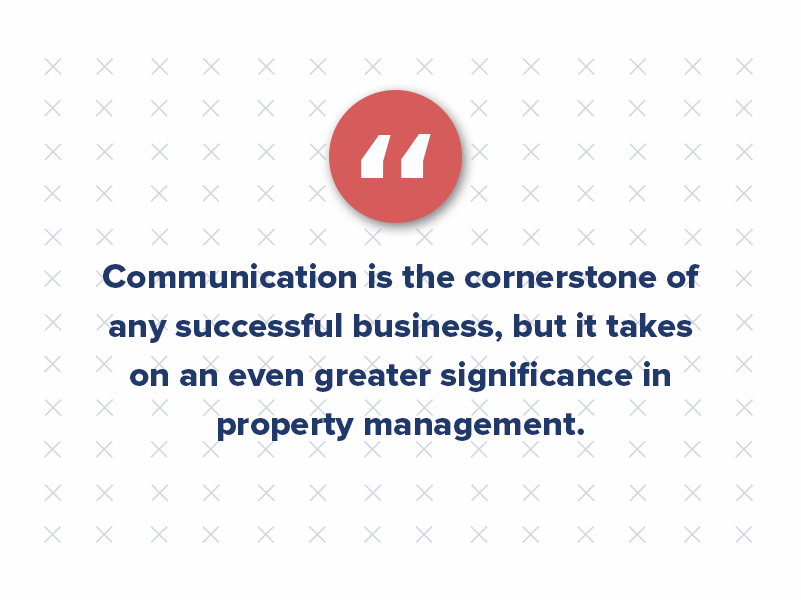
4. Poor Communication With Residents
Communication is the cornerstone of any successful business, but it takes on an even greater significance in property management. You’re constantly juggling interactions with a diverse group — your team members, property owners, residents, and vendors. When communication breaks down, it can lead to misunderstandings, conflicts, delays, errors, and ultimately, dissatisfied customers.
Here’s how to ensure smooth communication:
- Establish Clear Channels: Don’t leave your team and renters guessing how to reach you. Set up designated communication channels — email, phone calls, text messages, or online platforms like resident portals. Consistency is key — don’t make them chase you down across multiple platforms.
- Frequency & Transparency: Aim for frequent, transparent communication. Regular updates keep everyone informed and in the loop. Don’t be afraid to share both good and bad news promptly and honestly.
- Tailored Communication: A one-size-fits-all approach won’t work. Tailor your communication style to your audience. Use clear and concise language with residents, provide detailed reports to property owners, and foster open collaboration with your team.
- Feedback & Listening: Communication is a two-way street. Listen to your team and renters’ concerns, questions, and suggestions. Provide positive and constructive feedback to keep everyone motivated and on track. Respond promptly and professionally, demonstrating that their input is valued.
- Technology Advantage: Fortunately, technology is on your side. Utilizing property management software streamlines communication by centralizing information, automating tasks, and facilitating easy access for all parties involved. This reduces the risk of errors and keeps everyone on the same page, boosting overall efficiency.
- Building Relationships: Effective communication goes beyond simply sharing information. It’s about fostering trust and building strong relationships. Schedule regular team meetings to discuss projects, address concerns, and celebrate successes. Open communication fosters a collaborative environment where everyone feels comfortable contributing their best work.
5. Not Keeping Records and Documents
Failing to organize and store important documents properly can lead to a domino effect of problems, including missing records. Missing or disorganized records can make tracking important information (i.e., lease agreements, maintenance requests, and financial transactions) difficult. This can lead to confusion, errors, and wasted time.
Without clear documentation, disputes with residents over rent payments, security deposits, or repairs can become tangled. Without proper records, you may be unable to defend your position in a legal dispute, potentially resulting in hefty fines or even lawsuits.
Here’s how to ensure your records are organized, secure, and accessible:
- Secure Storage: Utilize a secure and accessible system for storing your records. Cloud-based storage solutions offer convenience and accessibility, while traditional filing cabinets can work for paper documents.
- Regular Review and Updates: Don’t let your records become an archive of forgotten paperwork. Schedule regular reviews to ensure all documents are accurate and up-to-date.
- Compliance With Regulations: Retention laws vary depending on your location. Familiarize yourself with the relevant regulations regarding record keeping and disposal. Understanding these requirements ensures you’re adhering to legal mandates.

Effective record-keeping is a fundamental skill in property management. Most real estate transactions involve a mountain of paperwork — lease agreements, maintenance records, financial statements, and more.
Maintaining electronic copies alongside physical documents is essential in today’s digital age. This allows you to access crucial information even when you’re away from the office, ensuring you can always stay on top of your business.
6. Not Taking Advantage of Technology
Many property management software solutions can streamline your workflow and save you time. These tools can help you with tasks like screening residents, collecting rent online, managing maintenance requests, and generating reports. The fix? Research property management software options and find one that fits your needs and budget. Many offer free trials, so you can test them before committing.
7. Not Marketing Your Properties Effectively
Vacancies cost money. There’s no sugarcoating it. A well-defined multifamily marketing strategy is essential to attract qualified residents and keep your properties occupied.

Don’t put all your eggs in one basket. Utilize a diverse range of multifamily marketing channels to reach your target audience. This could include:
- Online Listings: High-quality listings on popular rental platforms are a must-have. If possible, showcase your properties with professional photos, detailed descriptions, and virtual tours.
- Social Media Marketing: Use social media to connect with potential residents. Share engaging social media posts, run targeted ads, and create a community around your properties.
- Website Presence: A professional website is a valuable asset. It lets you showcase your properties, provide leasing information, and establish your brand identity.
- Offline Strategies: Don’t underestimate the power of traditional methods. Yard signs, local print ads, and partnerships with businesses in your area can still be effective ways to reach potential renters.
While a do-it-yourself approach is possible, managing a comprehensive marketing strategy can be time-consuming, especially as your portfolio grows. This is where partnering with a marketing agency can be a game-changer.
Think of a marketing agency as an extension of your multifamily property team. They can provide a wealth of expertise and resources to help you achieve your marketing goals and increase your bottom line.
Here are just a few of the ways a marketing agency can streamline your marketing efforts:
- Streamlined Marketing Collateral: Ordering eye-catching flyers, brochures, and other marketing materials can be a hassle. Criterion.B offers a one-stop shop for designing and ordering all your promotional needs to save time and ensure brand consistency.
- Actionable Analytics & Reporting: A good marketing agency will leverage analytics tools to track the performance of your marketing campaigns. This data can reveal valuable insights into what’s working and what’s not. They can help you set up and track key metrics like website traffic, lead generation, and conversion rates.
- Search Engine Optimization (SEO): Improving your website’s ranking in search results so potential residents can easily find your listings.
- Email Marketing: Creating targeted email campaigns to nurture leads and connect with potential renters.
- Blogging and Content Creation: Developing engaging content that showcases your properties and attracts qualified leads via a blog post.
- Social Media Management: Creating engaging content and managing interactions with potential residents across all social media channels.
- Branding and Design: Developing a strong brand identity for your property management company, including logo design and website creation.
- Website Development and Management: Building a user-friendly website that showcases your properties and provides a seamless leasing experience.
8. Not Staying Up-to-Date on Industry Trends
The property management industry constantly evolves, with new technologies and regulations emerging. Staying informed is important to ensure your business runs as efficiently and effectively as possible.
The fix? Attend industry conferences, webinars, and workshops. Read industry publications and blogs to stay up-to-date on the latest trends.
Want quick marketing tips and multifamily trends delivered straight to your inbox once a week? Sign up for our weekly email list to stay informed!

9. Ignoring Complaints & Not Focusing on Resident Retention
High resident turnover can be a major drain on your resources. It involves advertising costs of vacant units, showing apartments, screening new renters, and processing paperwork. It can also result in a loss of rental income during vacancy periods. But the hidden costs are even greater — negative reviews, a damaged reputation, and a revolving door of unhappy residents.

Here’s how to cultivate a thriving community that keeps renters happy:
- Treat Renters with Respect: Building positive relationships starts with respect, courtesy, and professionalism. Respond to their needs and concerns promptly and effectively.
- Responsive Complaint Resolution: A well-defined system for handling complaints is essential. This includes a clear process for receiving, recording, and resolving issues. Respond quickly to complaints to explain how you’ll address the problem. Keep residents updated throughout the process, and follow up after the repair.
- Value Feedback and Communication: Open and transparent communication is key. Encourage feedback. Regularly solicit their input through surveys, resident meetings, or suggestion boxes. Actively listen to their concerns and suggestions, demonstrating their input is valued.
- Offer Incentives for Renewals: Show your existing renters how much you appreciate them by offering incentives for lease renewals. This could include discounts on rent, free parking, or waived application fees.
- Create a Sense of Community: Help your residents feel like they belong! Organize fun events, create social media groups for them to connect, or offer amenities that encourage interaction. When residents feel like part of a community, not just renters in a building, they’re more likely to want to renew their leases.
10. Micromanaging Your Team & Not Delegating Tasks
Learning the art of delegation becomes increasingly important as your property management portfolio expands. While you may be tempted to hold onto the reins and meticulously manage every detail yourself, this approach is ultimately unsustainable and can hinder your long-term success.
Micromanaging your team can have several negative consequences. It can stifle their motivation, creativity, and sense of autonomy. Constantly hovering over their shoulders can make them feel like they’re not trusted to do their jobs effectively, decreasing morale and productivity.
The solution lies in empowering your team through effective delegation.
- Delegate Based on Strengths: Analyze your team members’ skills, experience, and interests. Assign tasks that align with their strengths and allow them to develop new skills.
- Trust and Autonomy: Once you’ve delegated a task, trust your team to complete it without your constant oversight. Micromanaging every step is a recipe for frustration and resentment.
- Support and Resources: Provide your team with the necessary resources for success, such as training materials, software tools, and clear guidelines.
- Coaching for Growth: Don’t hesitate to offer guidance and support as needed. Regular check-ins and constructive feedback can help your team members grow in their roles.

Often, managers who micromanage their teams worry their employees aren’t doing a good job. If you don’t communicate well with your team or can’t motivate them, they might not feel like doing their best work. Instead of hovering over them, invest in becoming a better leader. Learn how to communicate clearly and build a team environment where everyone feels trusted and responsible for their work.
Remember, you hired your team for a reason — you believe in their skills and potential. Start by delegating smaller projects that allow them to demonstrate their capabilities. As they gain confidence and experience, gradually increase their scope of responsibility. If they hit a roadblock, provide coaching and support to help them develop the skills they need to reach the next level.

The True Value of a Qualified Lead in Multifamily Marketing
For commercial real estate marketing professionals, adapting to the rapid shift toward digital methods is both challenging and essential. Traditional property marketing techniques, honed over decades, are familiar to many. Yet, the evolution of the commercial real estate market trends points unmistakably toward the burgeoning significance of online platforms and digital outreach.
Navigating this digital realm can often feel like venturing into uncharted territory. While old marketing methods are quickly embraced due to years of experience, commercial real estate digital marketing strategies often face skepticism. These modern strategies’ tangible benefits and efficiencies, such as lower implementation costs, are frequently overshadowed by doubts and resistance. This evolving scenario poses a unique problem for multifamily marketing managers attempting to position themselves at the forefront of real estate marketing strategy innovation.
So, how can one effectively convey the value of a lead, especially a qualified apartment lead, within this digital framework? The challenge might seem daunting, but understanding and leveraging the potential of digital tools is crucial for marketers determined to stay ahead in the game.
The Quantitative: Doing the Math
When navigating the intricacies of multifamily marketing, one of the foremost concerns that real estate agents and marketers face is justifying the costs to their executive team. While these teams frequently zoom in on ROI as the primary measure of success, a holistic view of marketing efforts suggests this isn’t the only metric that matters.
Why? Understanding the ROI in the world of real estate marketing requires a deep dive into the needs and behaviors of the target audience. Further complicating matters, there are numerous ways to calculate marketing ROI, each offering unique insights tailored to different real estate marketing ideas.
For those deeply entrenched in commercial real estate marketing, the prevalent method to gauge ROI is the “cost per lead.” But here’s where many face a problem: Does this metric encompass all leads, or does it specifically address qualified leads? If you’re using a real estate website to generate leads, search engines can often bring a mix of visitors, not all of whom are part of your target market. When examining the broad spectrum of all leads, the cost-per-unqualified lead will invariably seem more economical.
However, a closer look reveals the nuances. Many of these leads, especially those seeking properties like office space or virtual tours of property listings, might not align with what’s being offered, making them a less-than-ideal fit or not ready to purchase.
This initial cost, often deceivingly attractive, fails to factor in the lead’s position in the buyer’s journey, whether they’re just becoming aware or on the brink of making a decision. Consequently, this metric overlooks essential expenses, such as the costs of nurturing these leads through tailored marketing strategies or the eventual sales pitch.
Cost Per Lead
However, the standard “cost-per-lead” is likely a sufficient metric for companies playing the lead generation game. That formula is simple enough. You take the marketing spend and then divide it by the number of leads.
Marketing Spend / Total New Leads = Cost Per Lead (CPL)
But depending on your end goals, this may not be the number your executive team wants. They may be more interested in your cost per marketing qualified lead (MQL) — or a lead ready to go to sales. This number is not too complicated, either.
Divide the marketing tactic spend by the number of MQLs you got through that method. That’s your MQL cost. Not tracking MQLs? You will not be able to backtrack your MQLs, but we have some tips on setting up your lead qualification for the future.
Marketing Tactic Spend / Total New MQLs = Cost Per MQL
This metric will likely garner better interest than a standard cost per lead, but executives will likely want more. This is where “return on spend” comes in, which shows the actual value of your efforts by relaying how those efforts impacted your bottom line. In other words, it’s the amount you earn in the business compared to your spend. This number is much harder to get; however, it can be a significant selling point in convincing your boss of the value of your efforts.
First, you must know the lifetime value of your customers.
Lifetime Value
Calculating the lifetime value of your customer is simple enough, but your formula will vary based on the nature of your product or service. If you are a subscription-based service, you will want to know the average monthly spend of a customer. If you offer a one-time product or service, you must consider typical upsells, which can increase your averages. There’s no simple formula, but once you go through this process with your sales data, you should be able to come up with a reasonable average.
The next step is to look at conversion rates of qualified leads — namely, how many marketing-qualified leads become sales-qualified leads and the average close rate of a sales-qualified lead. Got that number? You are going to use it to calculate the MQL value.
MQL Value
The MQL value is vital because it benchmarks how much an MQL should be worth. It’s also key in calculating return on spend. With this number and your cost per MQL, you can calculate the return on any marketing spend — email campaign, social media ad, etc. It’s as simple as dividing the MQL value by the cost per MQL
MQL Value / Cost Per MQL = Return on Spend
This number can help commercial real estate marketers justify marketing endeavors. However, it’s not the only one you should look at. A better snapshot number could be “return on campaign,” which looks at your endeavors. Much like a standard ROI number, return on campaign operates on similar calculations, but while looking at the components of your marketing campaign over the set time it ran.
Traditional ROI computations look like this:
(Sales Growth – Marketing Cost) / Marketing Cost = Return on Investment
However, with campaigns in mind, there are often different or additional costs involved, and not all sales may result from the campaign. If you run a single campaign at a time, you could modify this calculation to reflect any natural growth you see on average.
(Sales Growth – Marketing Cost) / Marketing Cost – Avg. Organic Growth = Return on Campaign
This gives you a more standard return that executives are used to interacting with. However, if you run multiple campaigns simultaneously, you can calculate individual returns on each campaign by taking a more roundabout approach. This involves looking at customers acquired from the campaign and multiplying the average sales and margin. Then, you subtract your campaign budget. This gives a more accurate number as to the contributory effect of each campaign.
(# Campaign Customers * Avg. Sale Amt. * Avg. Margin) – Campaign Budget = Return on Campaign
These numbers may not be simple to master or even remember; however, they’re a great way of proving marketing’s worth to your executive team.
The Qualitative: Remembering the Immeasurable
People like numbers because they are easily digestible. A number tells a simple story. But a number can also be manipulated. And a number doesn’t always tell the full story. Often, having numbers is not enough — you also need a narrative. This is where “qualitative” value comes in.
A great return on spend will undoubtedly do well to impress your C-suite with your marketing efforts. But what if you told them you also could decrease your sales cycle by a few months? That would garner strong attention as well. This is just one example of qualitative value when discussing your marketing endeavors — and the unexpected benefits of running a solid digital marketing campaign.
Digital Marketing Is Iterative
Another positive qualitative value? Certain parts of a digital marketing strategy are iterative. Commercial real estate marketers may need to develop new content or web pages for campaigns, but much of the groundwork is already done. And most of it will not need to be done again. Or at least not soon.
Buyer personas and the associated buyer’s journey may need adjustments over time. However, none of that will compare to the initial costs of developing these items. This means that over time, your ROI will likely decrease, as the costs of these components can technically be spread across each campaign. It’s hard to calculate this as a number, but it certainly goes into ascribing value to the lead process.
Qualified Leads for Commercial Real Estate Marketers
The biggest qualitative value that inbound offers is qualified leads. Traditional marketing methods gather unqualified leads sent to sales — or worse, cold-calling. On the other hand, inbound marketing puts a process in place that qualifies leads naturally through offers and nurture campaigns.
This systematically improves the marketing process, allowing leads to qualify themselves as you push out more content. In turn, you shorten the time and resources the sales team spends qualifying leads. This means commercial real estate marketers’ qualified leads from the inbound process cost less than the qualified leads you get through another method.
The Bottom Line of Lead Value
So, what does this mean for commercial real estate marketers?
Pulling it all together, a digital marketing program like multifamily inbound marketing allows you to ascribe worth to the apartment leads you gather easily. Multifamily inbound marketing also enables you to prove that the costs and returns associated with those leads are of greater value to your business than leads garnered from more traditional methods.
In coupling calculations like return on spend, you can prove your leads’ quantitative and qualitative value. As we noted previously, inbound marketing offers improved cost-per-lead values and lower implementation costs. But it’s one thing to know it and another thing to prove it to your executive team.
Navigating the Balancing Act Between Sales and Marketing Teams
A synergy between sales and marketing teams lies at the heart of a successful multifamily marketing plan. In the commercial real estate sector, marketing centers on intelligence and data gathering, while sales focus on execution; yet, their roles are deeply intertwined.
The marketing team dives deep into rent data, conducts market research, and absorbs the multifamily industry’s broad scope. Based on this data, they identify potential leads and then pass the baton to sales. The sales team then educates the public, forges relationships, and drives new business acquisitions while gathering invaluable on-the-ground insights.
But here’s the crux: even though their day-to-day functions differ, one cannot thrive without the other.
Balancing the Equation in Multifamily Marketing and Sales
While sales and marketing may occasionally be at odds, with different perspectives and expectations from each other, their success hinges on mutual reliance.
Marketing teams need sales insights. Sales teams often offer a ground-zero perspective, giving marketing a clear picture of potential customers’ reactions and feedback. Conversely, sales teams heavily depend on marketing for aggregated data, market trends, and overviews, ensuring they align with the broader business strategy.
But how do you ensure this balance is maintained?
Bridging the Divide for Effective Multifamily Marketing Plans
To maximize the potential of a multifamily marketing plan, unity between sales and marketing is non-negotiable. Both teams should have an appreciation for each other’s roles and challenges.
Imagine if professionals had to spend some time in the opposite camp before rising to senior roles like Sales VP or Marketing VP. Such cross-functional experiences can foster mutual respect, better understanding, and more collaborative strategies.
Promote a culture where the company views sales and marketing teams as equal pillars supporting its growth. Both should operate at the same hierarchical level, emphasizing collaboration over competition. The old “us vs. them” mentality? It’s time for that to go.
Boosting Customer Engagement Through Cohesion
What is the tangible outcome of a harmonized sales and marketing approach in multifamily operations? High-quality leads. Lead quality significantly uplifts when both teams are in sync, especially in an inbound marketing framework.
Inbound marketing, peppered with rich content like whitepapers, blogs, and social media, serves as a tool to educate potential clients. With this approach, prospects are well-informed before the sales team engages them. They know the services offered, have weighed their options, and when they reach out, they ask intelligent, informed questions, streamlining the conversion process.
Remember, an effective inbound multifamily marketing plan thrives on a united front between sales and marketing.
Sales and marketing are not just departments but the twin engines propelling a multifamily business forward. Multifamily marketing plans can soar to new heights by fostering a symbiotic relationship, driving leads, conversions, and business growth. The question isn’t whether they should coexist but how best to ensure they flourish together.
How to Support Consistent Growth for Your Multifamily Business
The multifamily market has seen a paradigm shift with the rise of inbound marketing. A comprehensive perspective is vital as you construct your marketing funnel, from crafting insightful blog posts to launching targeted Facebook ads.
New marketers eager to build captivating campaigns and hone their content marketing efforts might sometimes overlook crucial elements like the leasing agent’s strategic role and the nuances of the target audience.
Without a dynamic strategy for enticing potential customers, even the most detailed funnel risks stagnation. Ensuring that every facet of your marketing efforts works harmoniously is essential for generating loyal customers.
Focusing on the Funnel
A successful marketing idea hinges on mastering the inbound marketing funnel. For those who are new to this approach, it’s common to launch numerous campaigns with a keen focus on the buyer’s journey at every stage.
However, the true secret lies in optimizing strategies for prospective customers. Emphasizing search engine optimization (SEO) ensures your business consistently appears atop search results, making it more visible to potential customers.
Campaigns certainly have their place, but the key to long-term success is concentrating efforts at the funnel’s top. This is where initial interest from potential customers is captured.
Without this interest, there’s no pool of leads to nurture or engage with. Excellent customer service and content tailored specifically for your target audience is essential. With this approach, you can guarantee a steady flow of visitors and create opportunities to convert them into long-term customers or clients.
Making Your Multifamily Marketing Funnel Scalable
The key to any business growth is scalability. But how do you translate a marketing funnel to meet scalability needs?
The first requirement is to look solely at the numbers. If you are struggling to bring in 1,500 web visitors per month and are only converting that traffic to leads at a rate of 3%, the outlook for company growth is not promising.
When faced with this kind of issue, it is essential to change your funnel, albeit one at a time. Again, your concern should be primarily on your traffic generation or how to increase that visitation from 1,500. If nothing else, an increase in site traffic to around 5,000 monthly with a steady lead rate of 3% can still significantly impact your top-of-funnel multifamily leads from 45 to 150 a month.
But how do you increase this traffic to such a rate? Again, your focus should be content. Experimenting with your content tilt, improving your content amount, and changing how you promote your content can contribute to higher traffic.
Maintain Consistent Conversion Rates
Achieving a scalable marketing funnel hinges on the stability of conversion rates, a crucial metric for multifamily marketing professionals. The effectiveness of your efforts, particularly in areas like landing pages, forms, and special offers, plays a significant role in driving these conversion rates.
For instance, if you’ve historically experienced a 5% conversion rate from visitors to leads and a subsequent 1% from leads to actual customers, it’s paramount that these figures remain steady or, even better, show improvement to ensure the potential for long-term growth.
Consistent conversion rates don’t just offer a static picture; they enable forward-thinking marketers to predict the number of potential customers or clients that may enter the lead generation pool within a given timeframe. Moreover, closely monitoring these rates allows you to gauge the number of leads likely to transition further down the sales funnel.
The integration of well-maintained buyer’s journey content, coupled with feedback from your sales team and tactics such as multifamily SEO, ensures that your content resonates with the target audience and that you are on track to meeting the overarching objectives of your marketing campaign.
Keeping Up With the Content
For businesses seeing inbound success, it is tempting to lapse in your efforts or change direction due to comfortable growth. However, this can be incredibly damaging to your business. Your content needs to be consistent.
Again, we return to the issue of scalability. Knowing that content is the basis of bringing in multifamily traffic, it’s important to maintain that generation to maintain results. But how do you do that without your content growing stale? It’s a matter of knowing your audience so that you can take a leading approach in content creation.
Ideally, as you grow, it should be simple for your business to put processes in place to become a content machine. Keeping up with your content ensures your business can continue to grow easily.
Leveraging Technology for Insightful Thought Leadership
Multifamily businesses can’t afford to lag. Integrating technology and data analytics into your marketing approach can offer significant advantages.
1. Harnessing CRM Systems
Customer Relationship Management (CRM) tools are no longer a luxury but a necessity. These platforms give you a holistic view of each prospective customer, tracing their journey from mere visitors to committed customers or clients. Analyzing this data lets you pinpoint where potential customers or clients might drop off, allowing for timely interventions and targeted strategies.
2. Data-Driven Decision Making
Relying on gut feelings is a strategy of the past. Today, successful multifamily marketers bank on actionable insights derived from data analytics. By studying patterns, behaviors, and preferences of potential customers, marketing strategies can be fine-tuned to match the exact needs and desires of the target audience. This ensures higher conversion rates and, ultimately, more signed leases.
3. Automated Marketing Campaigns
Automation in marketing can be a game-changer. Imagine tailoring specific email campaigns for different segments of your audience, triggered by particular actions they take. This ensures that the content is relevant to the recipient and reaches them opportunely, increasing the chances of conversion.
4. Continuous Learning and Adaptation
The digital landscape is ever-evolving. What works today might not be as effective tomorrow. Therefore, continuous learning and staying updated with the latest marketing trends, technological tools, and best practices are crucial. Regular training sessions, workshops, and webinars can help multifamily marketers stay ahead of the curve.
While content marketing fundamentals remain rooted in understanding and catering to the buyer’s journey, the tools and technologies available to us have greatly expanded. These tools can help you maintain traffic and ensure sustained growth and expansion in an increasingly competitive market.
Beyond Likes and Shares: 5 Facebook Strategies for Modern Student Housing
Generation Z has become synonymous with online interactivity. Having grown up during the rapid expansion of the internet and with smartphones always within reach, they are a generation that prioritizes digital communication over traditional methods. For Gen Z renters, expressing themselves through text or sharing weekend escapades on social media is the norm.
Struggling to connect with them? It’s a two-way street. Just as you might find their digital-first approach bewildering, they might be equally puzzled by older communication methods.
Dive Deep Into the Digital World of Gen Z Renters
If you’re in the realm of student housing development and wondering why social media should be your go-to communication tool, consider this: the window to engage with these students is relatively short. Missing out on the platforms they frequent means missing out on key interaction opportunities.
Let’s talk about Facebook to start. About 70% of American adults use Facebook. And you might be thinking, are any of those users even Gen Z renters? Recent studies show only about 7% of Gen Z users plan to quit Facebook in 2023. While this isn’t the “first choice” social media platform for this demographic, they still use it.
So, what’s the best way to tap into the heart of Gen Z’s digital life, especially on platforms like Facebook?
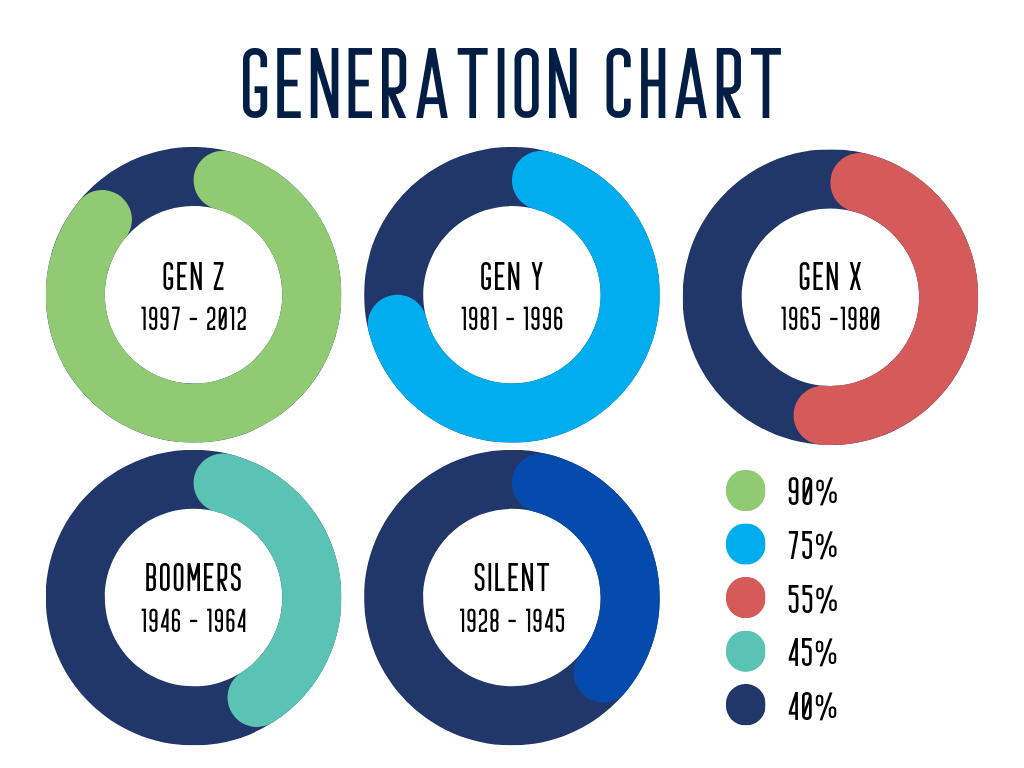
1. Promote On-Campus Events Digitally
If you’ve observed dwindling numbers at on-campus events, it might be time to rethink your promotional strategy. Traditional flyers might not just be environmentally unfriendly but might also not resonate with Gen Z renters.
Instead, create Facebook event pages to promote these events. Showcase visuals from previous iterations (if it’s an annual event) to blend tradition with contemporary outreach methods.
2. Quick Weather Updates
Imagine a scenario where unforeseen weather conditions, like heavy snowfall, disrupt regular schedules, and classes must be canceled. Instead of relying on email notifications that might go unread, why not use Facebook?
With Gen Z constantly scrolling through their newsfeeds, timely posts about weather alerts ensure immediate dissemination of crucial information.
3. Disseminate General Announcements
Got updates about the residential facilities, changes in semester timelines, or items in the lost and found? Facebook is your platform! Craft concise posts enriched with visuals (images or videos) to swiftly inform your student housing community.
4. Foster a Community With User-Generated Content
User-generated content is one of the most genuine ways to boost engagement and build a sense of community. Encourage your residents to share their unique experiences, be it a quiet study session in the lounge, a fun community event, or even a serene sunset view from their apartment window.
Launch monthly challenges or themes where students can share photos or stories about a particular topic or hashtag. Not only does this provide fresh, authentic content for your Facebook page, but it also allows residents to actively participate in creating the narrative of their community. Celebrate and showcase this content by sharing selected posts or creating monthly highlights. This validates your residents’ efforts and paints a genuine picture of life in your housing facility, which can be an invaluable tool for prospective students evaluating their housing options.
5. Utilize Facebook Groups for Direct Engagement
Did you know that 1.8 billion people interact in Facebook groups every month?
Beyond your primary Facebook page, consider setting up dedicated groups for different blocks, year groups, or special interest communities within your housing complex. Facebook Groups offer a more intimate setting for discussions, feedback, and announcements specific to group members.
For instance, a group dedicated to residents interested in fitness could have announcements about gym timings, fitness challenges, or even resident-led yoga sessions. Similarly, a group for a specific block or building can discuss maintenance issues, attend community meetings, or even organize block parties.
You can offer tailored content and create a more personalized resident experience by segmenting your audience. Additionally, these groups foster peer-to-peer interaction, helping residents connect over shared interests or concerns. It’s about broadcasting messages, facilitating conversations, and building a supportive community.
Social Media Isn’t Just a Tool
While the digital landscape and preferences of newer generations might seem complex, remember that platforms like Facebook were ironically first conceptualized for college students. Embracing such platforms for your multifamily marketing can bridge the communication gap, foster a vibrant community spirit, and attract new apartment leads. If done right, social media isn’t just a tool — it’s a transformative force.



